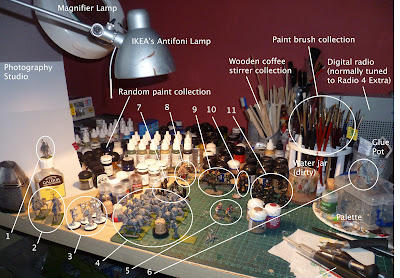The town of Newark is located on the intersection of the Great North Road, the Fosse Way and the lowest crossing of the River Trent and hence controlled the gateway to the north. During the English Civil Wars the town was besieged three times by Parliament forces. The first two sieges were relieved by Royalist armies. It was after the second siege that the Royalist forces decided to greatly strengthen their defensive positions around the town.
 |
| Modern reconstructive illustration |
One of the resulting structures, the Queen's Sconce (from a Dutch word meaning fort) is one of Europe's best preserved earthwork fortifications. The Royalist stronghold is named after the wife of Charles I, Queen Henrietta. There was also a King's sconce to the north-east of the town.
Located on elevated ground to the south-west of the town the sconce provided cover to the town, River Devon (previously called the River Smite) and the main roads.
The third siege began in November 1645 with the Parliamentarian forces being led by General Sydenham Poyntz. Richard Franck wrote in the 'Northern Memoirs' (1658),
"such deep graffs, bastions, horns, half-moons, counterscarps, redoubts, pitfalls, and an impregnable line of sod and turf palisade and stockade every fort so furnished with great guns and cannons that this bulky bulwark of Newark represented to the siegers but one entire sconce."
The Siege lasted six months and on 27th April 1646 Lord John Belasyse Governor of the town, surrendered the town under direct orders from the King.
In one of those strange quirks of history the earthwork survived for the same main reason that caused the town to fall - the plague. After the Royalist surrender the Parliamentarian forces withdrew as quickly as possible from the area due to the threat of plague. The locals were ordered to dismantle all the earthworks but understandably failed to do so. Hence the Queen's Sconce remains in such an impressive state today.
A few quick 'interesting' facts:
Although the sconce is easily visible on Google maps, the scale of the sconce still took me by surprise. The earthwork is now the centre piece of a refurbished park, small trees and bushes have been cleared from the ditches and banks. A small metal footbridge directly opposite the original has been installed enabling easy access into the interior of the earthworks.
 |
| View from the east bastion looking inwards. |
Note the internal earth ramparts.
 |
| View from north bastion looking south west |
Note the fields beyond the fort. General Poyntz eventually established his field HQ (on the second line of circumvallation) in this area, just behind where the small modern brick building now stands.
 |
| View from the west bastion looking north |
On the horizon is visible the spire of the parish Church of St Mary Magdalene. The castle (not visible) is located just to the left of the church.
 |
| View from the west to south bastion |
Note the modern footbridge.
Inside the tourist information centre, located in the grounds of Newark Castle itself, is a very nicely detailed 1/56 scale (28mm) model of the sconce. It reveals just how formidable the fort must have been during the siege.
 |
Queen's Sconce
1/56 scale model |
 |
Interior view of sconce
1/56 scale model |
 |
| Here's one I made earlier. |
This is my attempt at making a similar fortication. Made with the Queen's Sconce in mind, I made this way back in 2009/2010 without visiting the actual site itself.





























